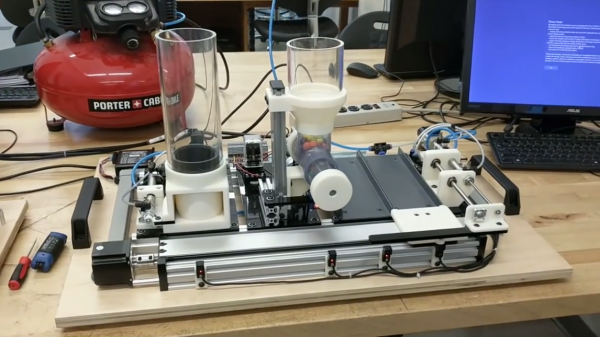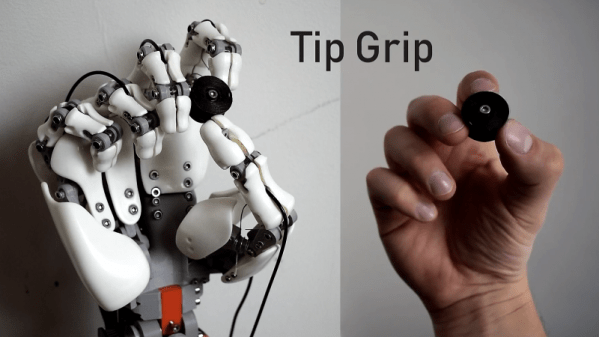We’ve got mixed feelings about a new video from [AndysMachines] that details how he makes custom ball screws. On the one hand, there’s almost zero chance that we’ll ever have an opportunity to put this information to practical use. But on the other hand, the video gives a fantastic look at the inner workings and design considerations for ball screws, which is worth the price of admission alone
The story behind these ball screws is that [Andy] is apparently in cahoots with SkyNet and is building a T-800 Terminator of his own. Whatever, we don’t judge, but the build requires a short-throw linear drive mechanism that can be back-driven, specs that argue for a ball screw. [Andy] goes through the challenges of building such a thing, which mainly involve creating threads with a deep profile and wide pitch. The screw itself wasn’t too hard to cut, although there were some interesting practical details in the thread profile that we’d never heard of before.
The mating nut was another. Rather than try to cut deep internal threads, [Andy] took a sort of “open-face sandwich” approach, creating half-nuts in a single piece of brass using a CNC machine and a ball-nose mill. The threads were completed by cutting the two halves apart and bolting them together — very clever! [Andy] also showed how the balls recirculate in the nut through channels cut into one of the half-nuts.
Whether the results were worth the effort is up to [Andy], but we were just glad to be along for the ride. And if you want a little more detail on lead screws and ball screws, we’ve got just the article for that.


















